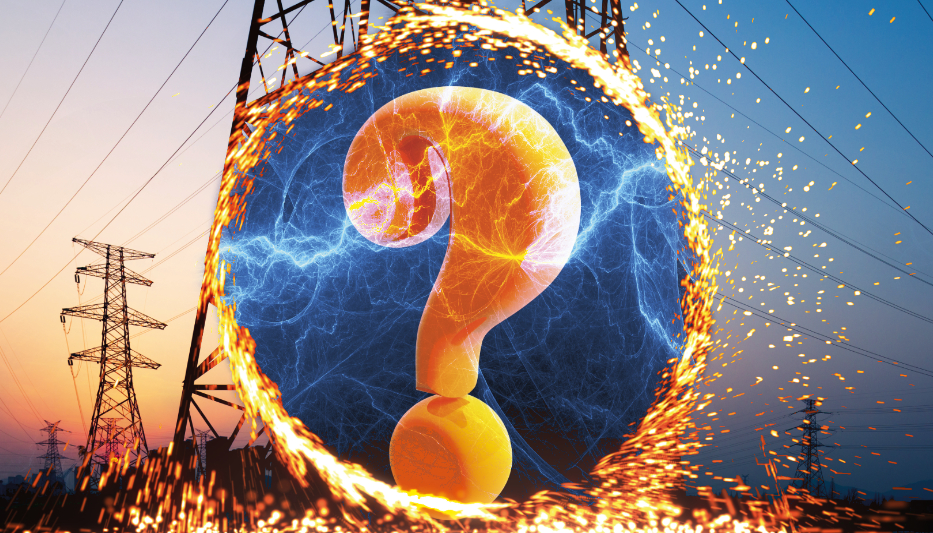All
The Question of Electrify Everything
by Rhonda Gerson

Answering the challenge with efficiency and carbon reduction strategies
“Providing secure, reliable, affordable, and clean electricity could become even more challenging. Inflation, high fuel costs, and supply chain snarls may keep electricity prices elevated, while extreme weather, cybersecurity threats, and the growth of variable renewables and [distributed energy resources] may continue to require innovative management to ensure grid reliability. The 47 largest US electric and gas utilities plan to spend a record-breaking $169.4 billion in 2023 to enhance reliability, security, and renewable integration. But as customers struggle with bill increases, affordability could become elusive.”
The Deloitte 2023 Power and Utilities Industry Outlook report, despite the findings above, was bullish on the electric energy sector, thanks to “supportive policies” which could “ripen opportunities in 2023 and help the industry achieve its goals.”
The “supportive policies” are detailed further in the document and include SEC regulations (enacted or pending) on environmental, social and governance (ESG) reporting, the Inflation Reduction Act’s (IRA) investment tax credit for energy storage projects and “clean hydrogen” facilities, and electric vehicle mandates from the EPA and a growing number of states. For more on regional “supportive policies,” please read “Electrification Sessions Bookend the HEAT Show” on page 18 and “Charging Headlong into Electrification” in the January/February 2023 issue of Oil & Energy.
There is still the matter of reliability of the electrical grid. For the last few years, aging coal, natural gas and nuclear power plants have shut down without replacements online and ready to pick of the slack. The North American Electric Reliability Corporation (NERC) has projected the Midcontinent Independent System Operator (MISO) region to be a “high risk area” that does “not meet resource adequacy criteria, such as the 1-day-in-10 year load-loss metric during periods of the assessment horizon. This indicates that the supply of electricity for these areas is more likely to be insufficient in the forecast period and that more firm resources are needed.”1 NERC has advanced MISO’s shortfall by one year, anticipating a 1,300 MW capacity deficit for summer 2023, and calling it “an accelerating trend since 2020 LTRA and the 2021 LTRA as older coal, nuclear and natural gas generation exit the system faster than replacement resources are connecting.”2
In the same report, NPCC-New England region is designated an “elevated risk area,” where, despite sufficient capacity for resource adequacy requirements, “it may not have sufficient availability of resources during extreme and prolonged weather events. Therefore, long-duration weather events increase the risk of electricity supply shortfalls.”3 Pointing directly to many issues familiar to Oil & Energy readers, the analysis notes that “electrification of residential heating requires the system to serve especially high demand on especially cold days.”4
In another Deloitte survey, more than half of the 23,000 worldwide respondents were “worried and anxious”5 about climate change, and 72 percent believe that climate change is an emergency. Fifty-five percent had purchased a sustainable product or service in the previous four weeks – mostly food, beverages and everyday household goods – and paid a premium for the environmentally friendly item.
Mixed Messaging
On the one hand, it is clear that liquid fuels are under threat. In 2020, then-candidate Joe Biden stated that he would “transition from the oil industry” and followed that promise with hundreds of billions of dollars in so-called clean energy investments, as well as legislation and executive orders calling for drastic reductions of carbon and greenhouse gas emissions from the building and transportation sector. States have followed suit, developing variations on cap-and-trade policies and clean energy standards. The common denominator in all is a definitive bias toward electrification to reach the goals of 100 percent carbon pollution-free electricity by 2030 (or later, depending on the legislative body) and net-zero emissions by 2050.
(We will return to the irony of net-zero policies ignoring the fact that the liquid heating fuels industry has also promised to reach net-zero emissions by 2050.)
On the other hand, the Biden administration has been expanding oil and gas exploration. The Bureau of Land Management has granted more drilling permits in Biden’s first two years than it did in the first half of Donald Trump’s presidency, including the ConocoPhillips Willow project in Alaska and offshore leases in the Gulf of Mexico (most of which were initiated under the previous administration).
The messaging has changed as well. In his January State of the Union address, Biden said, “We’re going to need oil for at least another decade … and beyond that.” In March, Energy Secretary Jennifer Granholm stated that “we know that oil and gas is going to remain a part of our energy mix for years to come … Even the boldest projections for clean energy deployment suggest that in the middle of the century we are going to be using abated fossil fuels.”
The Liquid Fuels Solution
Five years ago, the liquid heating fuels industry came together at the first Industry Summit and agreed to the Providence Resolution, which culminated in a pledge to reach net-zero carbon emissions by 2050. In the succeeding years, wholesalers and retailers have embraced Bioheat® fuel, with many delivering B5, B10, and B20, even in locales that do not legislate minimum blends. Herein lies the irony of the plethora of bills that promote electrification as the preferred, if not only, path to net-zero emissions.
“As an industry, we know that we need a balanced approach to lowering carbon emissions,” explained Sean Cota, President of the National Energy & Fuels Institute (NEFI). “To succeed, we need to promote energy efficiency and conservation as well as renewable fuels and decarbonization; educate consumers as well as policy makers; reduce costs and improve comfort. Bioheat® fuels are an important – and growing – part of any strategy, but we are also looking to carbon reduction solutions that are available to everyone right now.”
Fuel businesses which do not provide or promote biofuel blends are still helping to move our industry toward a cleaner future. They are delivering ultra-low sulfur fuels and educating their customers about the inherent fallacies of the electrify-everything movement. They are providing their customers with whole-home generators to protect against the very real threat of more frequent power outages, caused not by extreme weather events but by infrastructure failures. As “Main Street” local businesses, they are offering their neighbors price protection and budget programs to make paying for home comfort more manageable. And they are fighting for energy security and energy choice for their communities, their states and the country.
“We continue to pursue goals to reduce carbon emissions and fossil fuel consumption in ways that are balanced and realistic,” says Cota. “Despite any rhetoric to the contrary, electrification will increase homeowner costs for heating equipment, energy and transportation, and will increase greenhouse gas emissions of carbon and methane. Liquid fuels continue to offer consumers the lowest cost solution to reducing the environmental impact of space heating.”
“No one can debate the beauty of offering a consumer not only a choice, but a choice that has no transitional costs linked to utilizing the fuel; that decarbonizes immediately; and that capitalizes on the ‘Time Value of Carbon’ storyline,” says Paul Nazzaro, Supply Chain Liaison for Clean Fuels Alliance America (CFAA). “When the dust settles, Bioheat® fuel does what any consumer wishes their fuel will do, ‘offer reliable, dependable and bankable’ home comfort.”
Upgrading to Lower Carbon
Every liquid fuel retailer or wholesaler knows that the quickest, easiest, and most cost-effective way to reduce consumption and carbon emissions is by upgrading heating equipment. Homeowners who replace their boilers or furnaces see an average 16 percent increase in fuel efficiency, saving them nearly 130 gallons of fuel and approximately $500 per year and reducing their annual CO2 emissions by almost 1.5 tons. Over the 25-year expected lifetime of the new equipment, these savings will total more than 3,200 gallons, more than $13,000, and almost 37 tons of carbon. The Upgrade & Save Rebate Program, one of NORA’s state-managed consumer rebate programs, has helped more than 10,320 homeowners switch their decades-old boilers or furnaces.
“Our boilers have been the leaders in energy efficiency for more than 40 years, before anyone talked about energy savings,” said Jay McCay, National Sales Manager for Energy Kinetics. “We will begin testing our appliances as soon as the B100-rated burners are available from Beckett. This will expand the opportunities to deliver cost-effective, safe and reliable heat and hot water systems for the Oilheat and renewable liquid fuels industry.”
Other Renewable Fuels
There are other “renewable” fuels that are included in clean energy discussions. As with electricity (and “natural gas” before environmentalists began acknowledging the methane liability), there are issues with their environmental claims, safety, distribution, availability, scalability and/or implementation costs.
Hydrogen is considered a clean fuel because when combined with oxygen in a fuel cell it produces heat and electricity, with only water vapor as a by-product. There is the flammability issue to consider, of course, and the lack of infrastructure, but they pale when compared to one major fact: most hydrogen isn’t ‘green’ at all. Green hydrogen is produced when water is electrolyzed (separated into hydrogen and oxygen) using solar (or other organic) power. The majority of hydrogen is produced from combining water with methane, which produces … carbon emissions.
Renewable Natural Gas is natural gas produced by breaking down organic feedstocks, landfill waste, animal manure, and other refuse materials to produce methane. It is sometimes called “biomethane.” While proponents focus on the “organic” half of the equation, the extreme global warming potential of methane over a 20-year timeframe is conveniently left out of their “clean energy future” calculations.
Solar is a truly organic and renewable home energy source. There’s the sun. It rises in the morning and sets as night, as reliably as night follows day. Once the solar panels and battery back-up systems are set up, the homeowner doesn’t even have to pay the energy company. The drawback, unfortunately, is in the panels themselves. They are not recyclable, and in some regions may be classified as hazardous waste. The clean solution might soon overrun landfills.
Wind is also a clean energy but is not yet widely considered for home comfort. It requires an average wind speed of about 10 mph at the home and “clear space” where there are no buildings, trees, hills or other formations that might block the wind at the height of the turbine. Then again, the required height for the turbine might violate local zoning regulations. And, unfortunately, the turbine blades are not recyclable, leading to a situation, as with solar, where this green energy could turn into mountains of waste.
A winner-take-all mindset cannot provide the clean future that is the end-game of all these policies. That requires an intelligent strategy that includes all forms of lower-carbon energy. At present, the liquid fuels industry offers an immediate path to carbon reduction through energy conservation, energy efficiency, ULSHO and Bioheat® fuel.
“I’m bullish on all fuels,” Nazzaro concluded. “We will need all these solutions to meet our continued demand for energy, but until they are commercially viable and able to be used with solid infrastructure, my wish is that fuel dealers start telling the story about the product that will provide them another decade of opportunity to work into a rapidly evolving energy supply chain.”
Related Posts
 Spotlight Sessions Illuminate Opportunities and Challenges
Spotlight Sessions Illuminate Opportunities and Challenges
Posted on September 19, 2025
 NEFI Testifies on RFS Changes Affecting the Heating Oil Industry
NEFI Testifies on RFS Changes Affecting the Heating Oil Industry
Posted on August 18, 2025
 From Retailer to Representative: Chris Keyser’s Road to the Vermont State House
From Retailer to Representative: Chris Keyser’s Road to the Vermont State House
Posted on June 16, 2025
 Northeast Working Group for Industry Principles Gets to Work
Northeast Working Group for Industry Principles Gets to Work
Posted on May 8, 2025
Enter your email to receive important news and article updates.
